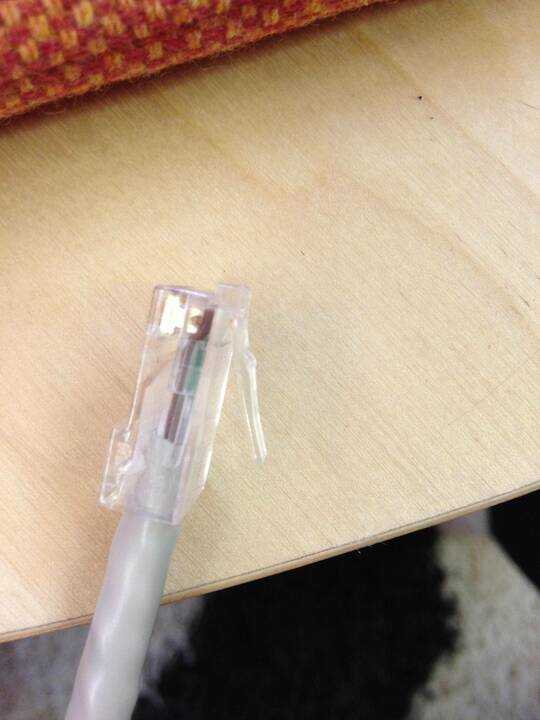Ethernet does a signal to noise ratio test on the cable before bringing the link up. Since your homemade cable gives you approximately Fast Ethernet results, it is likely that the link negotiated to 100M instead of 1GE. If true, that itself is an indication of sub Cat6 results (in fact, sub Cat5e results). This chart summarizes what Cat5e and Cat6 are capable of:

Gigabit Ethernet has different cabling requirements than FastEthernet. Both Cat5e and Cat6 cabling requires all eight pins to negotiate at GigabitEthernet speeds. If only one of eight pins in the RJ45 mod plug aren't good, you're forced to 100Mbps (FastEthernet).
As you can see, Cat5e cables are capable of GigE speeds, and they aren't difficult for an amateur to build. I would remake the cable; this Cat6 termination video does a much better job explaining than I could. Keep in mind that because of the difference in Cat6 conductor sizes, true Cat6 is about four times harder to terminate than Cat5e.
I usually unkink and straighten a little less than a mod plug's length of wires with the side if my strippers before inserting into the plug. Your picture shows a good jacket termination, but I'll just mention that the jacket should get crimped into the mod plug as well. Cat5e and Cat6 standards require no more than 1/2 inch (1.27 centimeters) of untwisted cable in the mod plug when you terminate it; keep that in mind as you trim the cable before inserting into the mod plug. Also, be sure you're using real Cat6 certified mod plugs and cabling; there is a big difference in the Cat5e and Cat6 hardware.
Responding to your comment:
Thing is that the "G" light still never comes on. I thought that Cat6 is alway GigE, so I must be doing something wrong still... The wires do work and achieve approx. the max speed of my ISP now.
There seems to be a bit of a misunderstanding...
- Both Cat5e and Cat6 are capable of GigabitEthernet; Cat6 results in a better cable with fewer errors, and you can run 10GE over short distances with it.
- Nothing about Cat6 requires an ethernet link to negotiate to GigabitEthernet. If the hardware only supports FastEthernet, that's the most you'll get.
- There are two likely speeds that your equipment operates at: FastEthernet (100Mbps) or GigabitEthernet (1000Mbps). Since your ISP rates are over FastEthernet, and you're getting those speeds now, it sounds like your link is operating at GigabitEthernet; however, I can't comment on your switch's "G" light.


6Have you used a cable tester on them? – mulaz – 2013-12-31T11:58:01.840
2Yes, crimping your own CAT6 cables usually results in lower bandwidth than expected. – Andrew Larsson – 2013-12-31T18:15:04.550
2The wire ducts weren't pushed entirely to the end of the jack, so the pins weren't completely jammed through the isolation of the wires. And apologies for the off topic; this stack exchange seemed to lean closest to the subject as far as I could see. – None – 2014-01-01T15:18:37.043
8@AndrewLarsson That's ridiculous. There is nothing wrong with making your own cables if you know what you're doing. – Brad – 2014-01-02T09:11:01.410